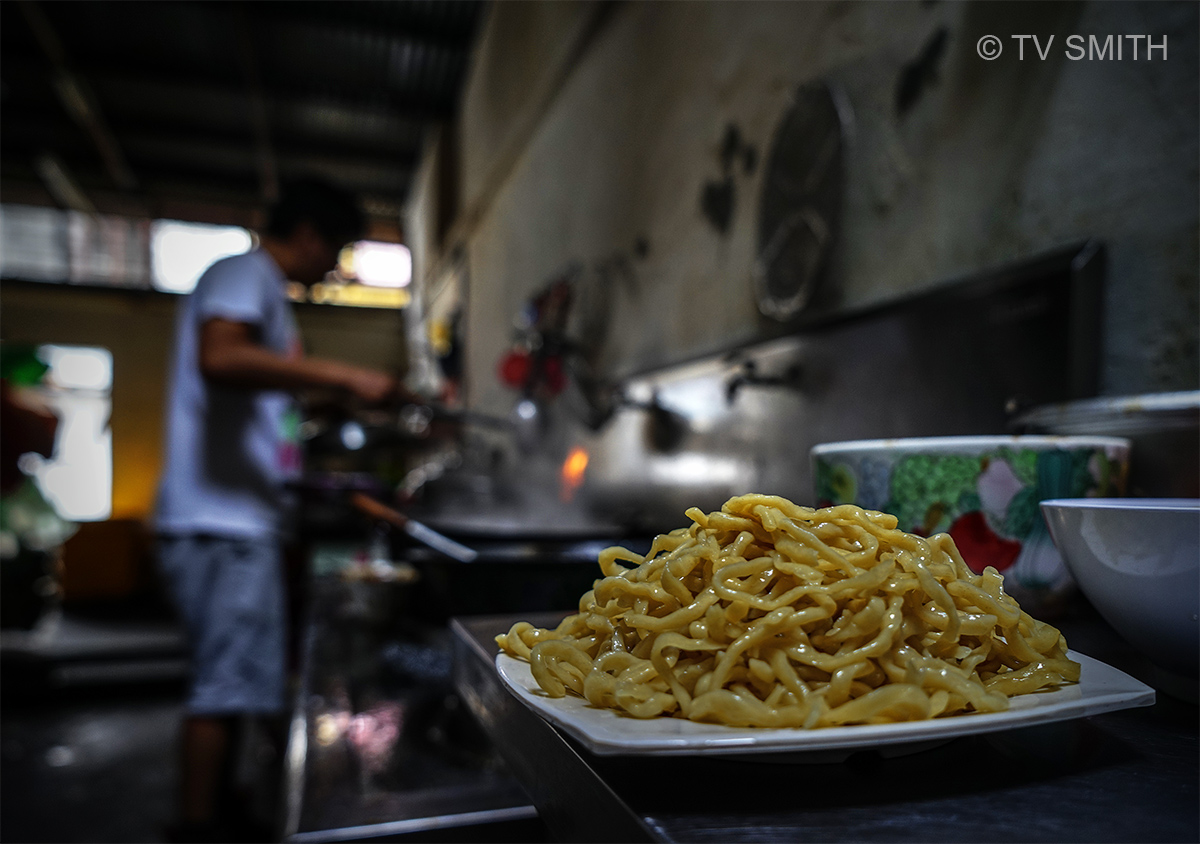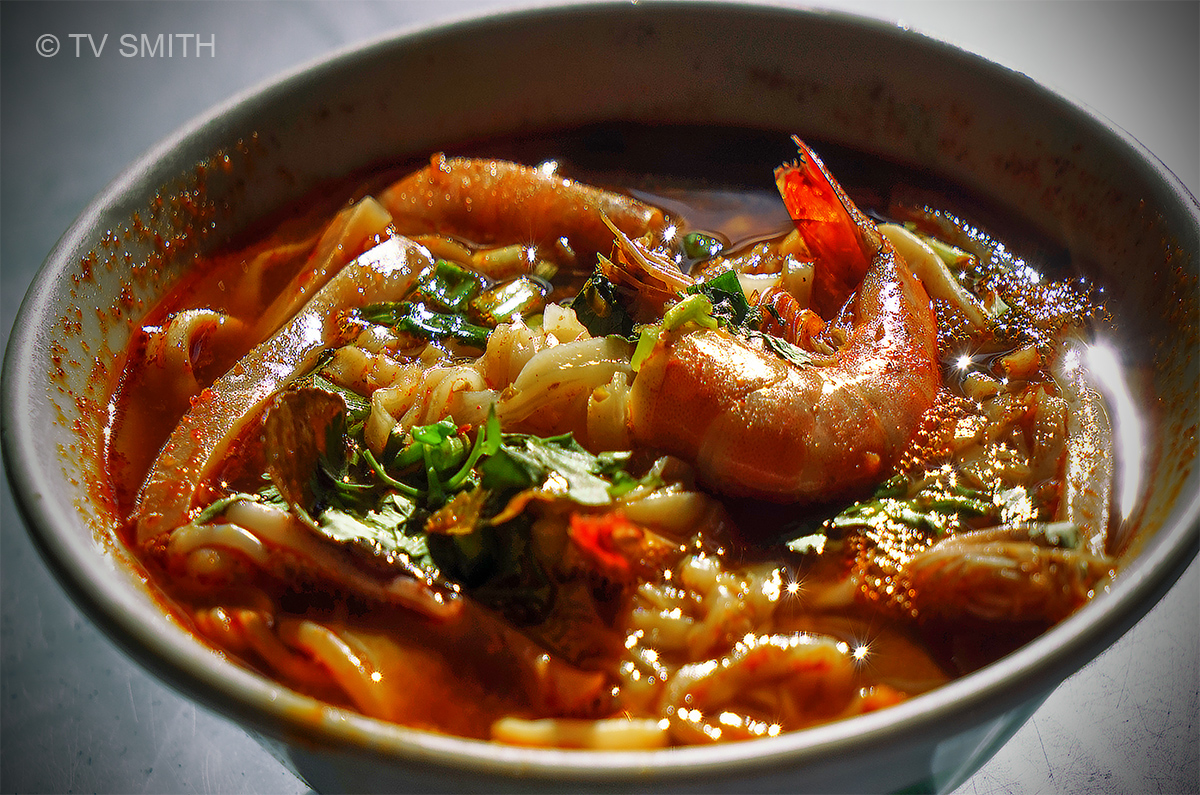Behrang is essentially a Hokkien town. Where Hokkiens ( 福建话 – Fujian people) live, you will find authentic Mee Hoon Kueh in eating places. By chance, I discovered one of the best here. Mee Hoon Kueh is similar to the Hakka hand-pulled “pan mee” or flat flour noodles.
Instead of noodle strips, the flour dough is delicately hand-kneaded with egg and oil into bite-size pieces. It is then brought to a simmer in a broth of ikan bilis (anchovies), pork balls, pork belly slices and sawi (mustard greens). It takes time to cook the dish as you can’t hurry love.
Good thing the boss of Vivian, the Indonesian cook, is always busy with mahjong. She learned the craft, refined it and now makes one of the most awesome mee hoon kueh I ever tasted. She said she might set up a stall back in Surabaya when she retires.
‘Mee Hoon Kueh’ is usually pronounced as ‘Mee Hoon Ker’ outside Penang and the north.
Sony Alpha a7R, ISO 500, f4, 1/80 sec.




